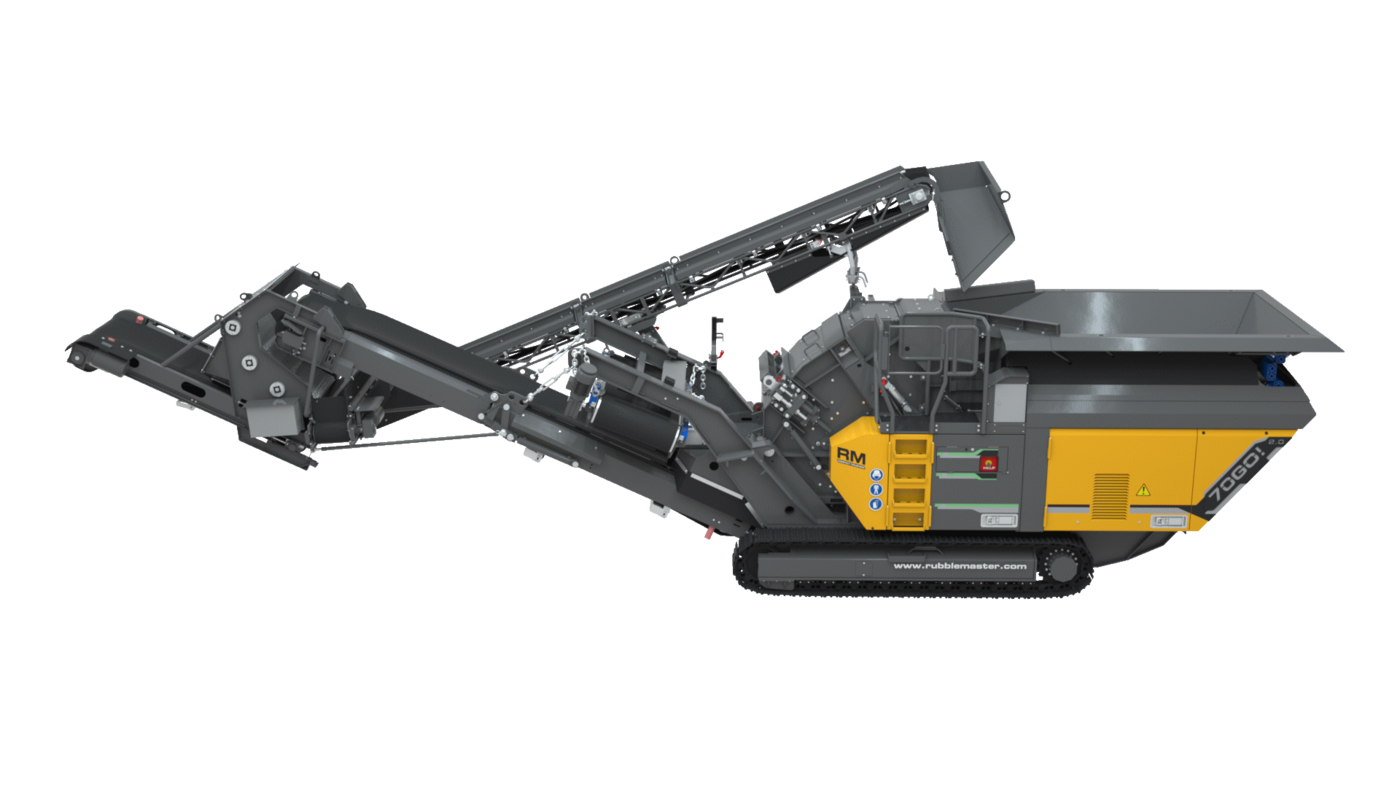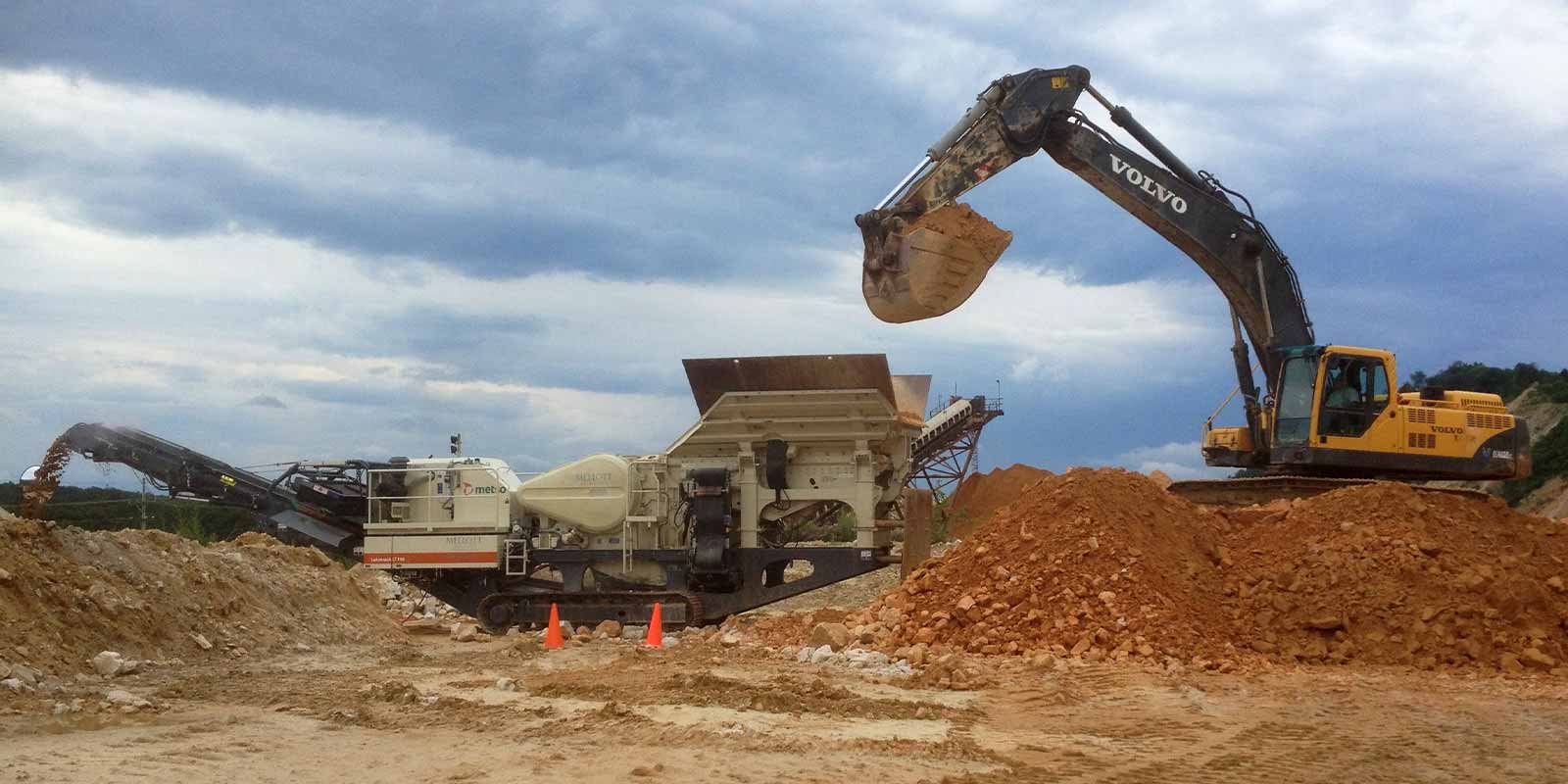Concrete Crusher Challenges: Selecting the Right Crusher for Your Demands
Concrete Crushers: Transforming Waste Into Belongings Resources
Concrete crushers play an important function in the construction and demolition sector by transforming waste products into useful resources. These powerful makers are created to break down concrete structures, such as bridges, structures, and streets, into smaller sized, more workable pieces. How precisely do they work? What kinds of concrete crushers are available on the marketplace? And what are the benefits of using this cutting-edge innovation? In this discussion, we will check out the fascinating globe of concrete crushers, discovering their inner workings, highlighting their varied applications, and clarifying the countless benefits they provide. Distort up and prepare to discover how concrete crushers are transforming the means we repurpose and handle waste products.
The Importance of Concrete Crushers
Concrete crushers play a critical function in the construction market by efficiently changing waste concrete into important sources. With the raising demand for sustainable building practices, the value of concrete crushers can not be taken too lightly. These equipments are developed to damage down large blocks of concrete into smaller, convenient pieces, which can then be used in numerous applications.
One of the key factors why concrete crushers are vital is their capacity to decrease waste. Concrete crushers can process this waste material and turn it into functional accumulations.
Additionally, concrete crushers likewise contribute to cost savings in the building industry. By recycling waste concrete, business can minimize the costs linked with throwing away concrete waste in land fills. In addition, using recycled concrete aggregates can be much more cost-efficient than buying virgin materials. This not just benefits building and construction firms but also aids to create a much more circular economic situation.
How Concrete Crushers Work

Concrete crushers been available in various sizes and kinds, however they all operate in a similar manner. The concrete is fed right into the crusher through a hopper or chute, and it is then smashed in between a moving jaw or an influence plate and a stationary plate. The resulting pieces are after that discharged with an opening at the end of the crusher. concrete crusher. Some crushers may likewise have a secondary crushing phase, where the smashed concrete is more reduced in size.
Types of Concrete Crushers
What are the various kinds of crushers used for breaking down concrete waste in the building industry? There are several sorts of concrete crushers that are frequently used in the building industry. These consist of jaw crushers, impact crushers, cone crushers, and hammer crushers.
Jaw crushers are commonly made use of as key crushers. They are developed to crush large items of concrete right into smaller sized fragments that can be used for different construction purposes. Jaw crushers have actually a taken care of jaw and a movable jaw that return and forth to squash the concrete.
Influence crushers, on the other hand, are used for secondary squashing. They are developed to crush the concrete right into smaller particles by using pressure via effect. Influence crushers can be either horizontal shaft impactors or vertical shaft impactors.
Cone crushers are visit utilized for tertiary squashing. They are created to crush the concrete right into also smaller particles. Cone crushers have a cone-shaped squashing chamber that revolves around its very own axis.
Lastly, hammer crushers are made use of for squashing concrete into great bits. They function by applying a click to find out more high-speed effect pressure to the concrete.
Benefits of Concrete Crushing
One of the substantial advantages of concrete crushing is the efficient use of waste resources in the construction sector. Concrete is among the most commonly pre-owned products in the construction field, and as a result, large amounts of concrete waste are created throughout building and construction and demolition activities - concrete crusher. However, instead of taking care of this waste in land fills, concrete squashing provides an environmentally-friendly and lasting option.

Moreover, concrete squashing provides economic benefits. Reusing concrete waste reduces the requirement for brand-new building and construction materials, hence leading to price savings for building and construction firms. The recycled concrete can be offered to other building and construction jobs or used for road base and landscape design purposes, creating added earnings.
Applications of Recycled Concrete Products
Recycled concrete products find a wide variety of applications in different building and construction jobs, many thanks to their sturdiness and sustainability. One of the usual applications of recycled concrete materials is as a base or subbase product for roads and sidewalks. The smashed concrete can be utilized as a stable foundation for new building and construction, decreasing the requirement for virgin accumulations and saving natural sources. Additionally, recycled concrete products can be used as fill material in land improvement jobs, giving a economical and ecologically friendly option.
One more application of recycled concrete products is in the manufacturing of brand-new concrete. Squashed concrete can be utilized as a substitute for all-natural aggregates, such as crushed you could check here rock or smashed stone, in the production of concrete.

Conclusion
Finally, concrete crushers play a crucial duty in changing waste right into beneficial resources. By successfully breaking down concrete structures, these equipments enable the recycling of concrete materials, lowering the requirement for brand-new construction materials and reducing ecological influence. With different kinds and benefits, concrete crushers have a wide variety of applications in the construction industry. Embracing using recycled concrete products can add to sustainable growth and source conservation.
Concrete crushers play a critical role in the building and construction market by successfully changing waste concrete into beneficial sources.With their capability to efficiently damage down large blocks of concrete into smaller sized, manageable items, concrete crushers demonstrate their important function in the building and construction market. Concrete crushers work by applying mechanical force to damage concrete into smaller sized pieces. Concrete is one of the most commonly secondhand products in the construction market, and as a result, large amounts of concrete waste are created during building and demolition tasks.By using concrete crushers, the waste concrete can be crushed into smaller pieces and reused as aggregate in new building projects.